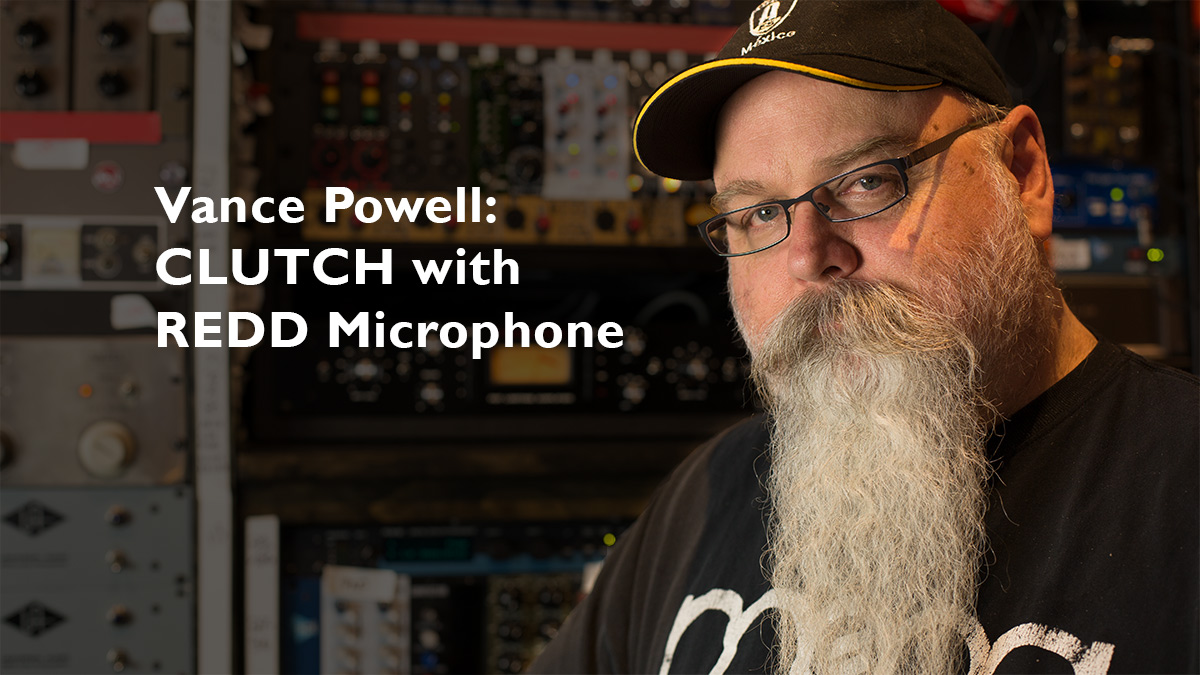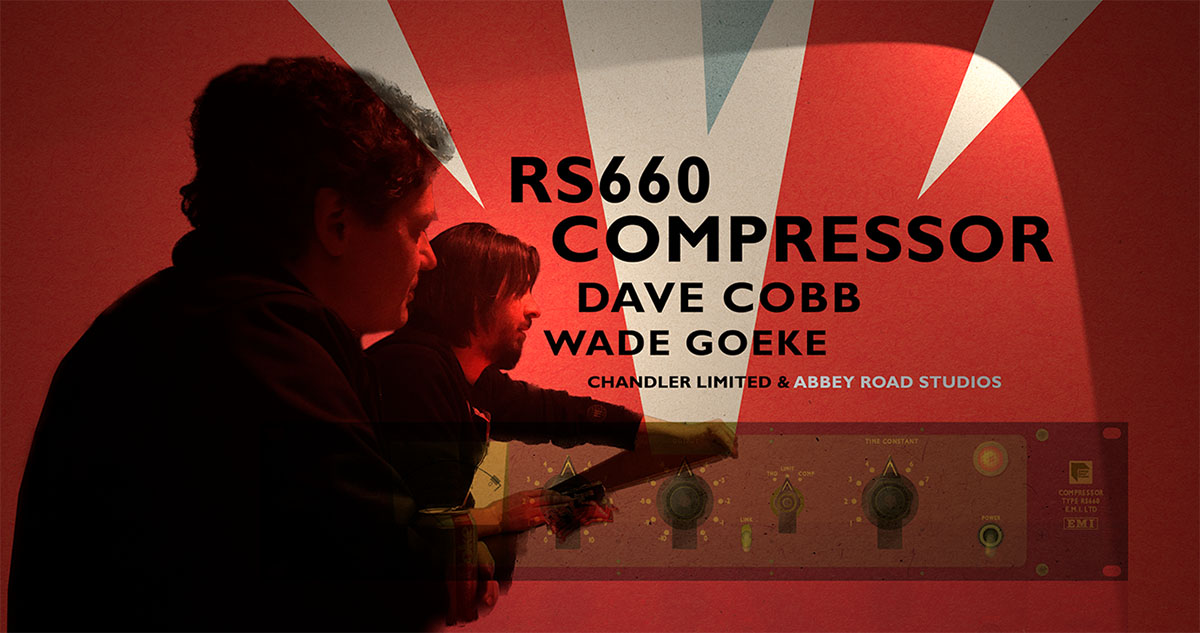Chandler Limited Germanium
by Rob Tavaglione, Catalyst Recording, Charlotte, NC
Audio Media – Feb 2009
FET Compressor
I often talk about compressors as ‘paintbrushes’ because of the way they impart a particular character on our tracks. As engineers, we purchase a variety of them, each for their individual traits and colourations, never expecting any one processor to function ideally across the board. I now stand corrected. The Chandler Germanium Compressor has taken my own world of compressor assignments and methods, and turned them inside out. This many features and this much versatility has made me rethink what I expect out of dynamics controllers.
Not A Carbon Copy
The Germanium – named after a lustrous metalloid chemical element in the carbon group – is eye-catching with its yellow ‘chicken head’ knobs and kidney shaped VU against a dark blue chassis. It’s an FET-based compressor with two XLRs for I/O (with transformers at input and output) and an outboard power supply that can power two Germaniums (two compressors strapped together for stereo operation or another model in the Germanium line). Germanium’s numerous controls include a hardwire bypass switch, a clean/dirty compression switch, a continuously variable input control that ranges from one to 11, a sidechain control, a ratio control (again, one to 11), a compression curve selector, a wet/dry mix control, controls for attack and release times, a stereo link switch, the germanium output drive control and, finally, a feedback control.
Most notable is the Germanium’s choice of compression curves, which include six modes (achieved through a network of resistors, germanium diodes, and silicon diodes): R soft, Germanium soft and medium, Silicon medium and hard, and Zener hard. R soft is very neutral gain reduction, whereas the other modes offer the pleasantly warm, round, and distorted sounds that such transistor/diode materials are known for. Germanium, the element, in particular is often used for great guitar distortions, but is expensive and difficult to work with – noisiness being one its problems. The side chain control is also notable for its ability to HPF the control signal (without an external EQ) to prevent bass-induced pumping when used on final mixes and other full-bandwidth material. This control ranges from out (no HPF) to 300Hz in six stepped settings. The clean/dirty switch allows the unit to be neutral and accurate in the clean position (with THD between 0.2-0.5%) and somewhat distorted (THD from 2-5%) in the dirty mode, with onlysecond- and third-order harmonics. The wet/dry control allows phase coherent blending of the original input signal with the processed signal, all summed at the drive/ feedback controls. Such parallel compression is commonly achieved with mults and subgroups, but can be easily dialed in here. Finally, the drive and feedback pots work together to affect the final output. The Feedback control changes how much inverted signal is routed back to the input and subtracted, which affects not only level, but also tonality and density. Turned fully to the right, feedback is minimized, with higher output, more distortion and a low bass bump. Drive affects how hard the germanium drive amp is hit, varying output level in conjunction with the feedback control.
Oh, Nuts
In a nutshell, the Germanium is a fantastically versatile compressor that can do just about any dynamics squeezing you might require, albeit with patience and careful adjustment. Transparent dynamic control was unexpectedly quite achievable, even in the Germanium soft mode, with moderate input and ratios, clean mode, slower attack, a click or two of sidechain filtering, moderate germanium output drive, and 50/50 of feedback. To my ears, the Germanium is actually clean and hi-fi enough for mastering, although stepped controls for repeatability would help here. The three Silicon and Zener modes aren’t nearly as polite as the others, with more grabbiness, a harder sound, and more sensitivity to both attack times and sidechain filtering. Whereas both Germanium soft and hard modes were typically flattering and tastefully ‘congealed’, both Silicon modes were temperamental and sensitive, with hard being really hard. Zener was even harder sounding than Silicon hard, with a distinctive bark and transient grab that was distinctively aggressive. So here’s the fun part; with any input source/mode combo I found less than desirable, I could massage the attack, sidechain, ratio, clean/dirty, wet/dry blend, germanium output drive and feedback, and get something I could actually use! This unit does indeed have a learning curve, but with experimentation it can do drums and whole mixes, it can do colourful and saturated. I couldn’t make it do really dirty mangling, at least not all by itself. It can get all saturated, pumpy and grabby if you make it, but it’s no distortion pedal.
Making Things Easy
Once I got used to having a plethora of compression options in one processor, the Germanium ultimately made my life easier, from tracking through mixing. I highly recommend the Germanium Compressor for those who – unlike myself – mix in the box, like some analogue texture, and don’t want to have only a single, character-laden sound available. For the mythical ‘desert island gig’, the Germanium’s extreme flexibility makes it a great choice in compression.
Why Germanium?
By Wade Goeke of Chandler Limited
“What originally got me started on the whole Germanium trip was that two of my all time favorite units used them: The Neve 1057 (mic pre/EQ) and the EMI TG 12345 (EQ). The sound of both intrigued me, but in some cases they were difficult to deal with – low headroom, oscillation, and noise. I wanted to make something with that type of sound and fix the negative aspects. My first experiments were very positive and I knew I was on to something. Historically, germanium transistors came between tubes and today’s standard silicon transistors. Many users say that our Germanium pieces have a tube-like quality when set certain ways; it makes sense when you think of them as the transition from tube to transistors. For me, [germanium transistors] offer a more organic, natural sound than silicon transistors. I do think there is more to the germanium thing than just throwing a couple of them together and expecting magic. A good deal of what I believe is special about our Germanium products is the implementation of the germanium transistors and the product design as a whole, not just the fact that we used germanium.”
—Rob Tavaglione






